HOME >> SCI-TECH
Hangzhou-Ningbo high-speed railway commences integration test
Source:Xinhua Published: 2013-3-1 22:09:42
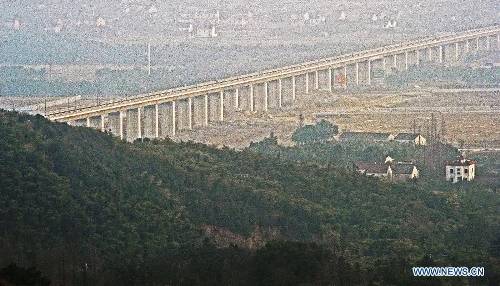
A viaduct is seen over farmland in Huzhou, east China's Zhejiang Province, Feb. 28, 2013. The 150-kilometer Hangzhou-Ningbo high-speed railway linking Hangzhou and Ningbo, two hub cities in Zhejiang, commenced its integration test here on Friday. Once put into operation on July 2013 as expected, the high-speed railway that designed at a top speed of 350km/h, would reduce the travel time to 36 minitues, a quarter time of the current two-hour journey. (Xinhua/Tan Jin)
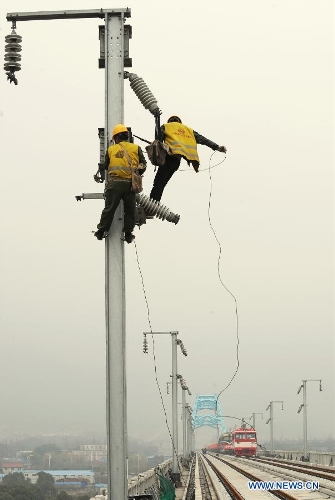
Two workers work on an electrification frame in Huzhou, east China's Zhejiang Province, March. 16, 2012. The 150-kilometer Hangzhou-Ningbo high-speed railway linking Hangzhou and Ningbo, two hub cities in Zhejiang, commenced its integration test here on Friday. Once put into operation on July 2013 as expected, the high-speed railway that designed at a top speed of 350km/h, would reduce the travel time to 36 minitues, a quarter time of the current two-hour journey. (Xinhua/Tan Jin)
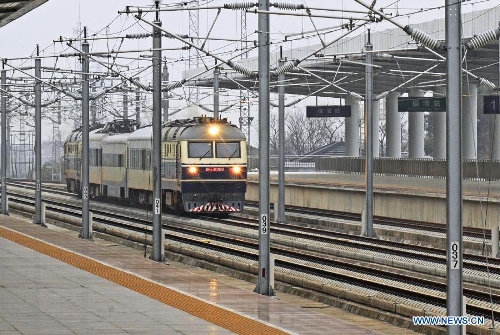
A testing locomotive runs into the Deqing Railway Station in Huzhou, east China's Zhejiang Province, March. 1, 2013. The 150-kilometer Hangzhou-Ningbo high-speed railway linking Hangzhou and Ningbo, two hub cities in Zhejiang, commenced its integration test here on Friday. Once put into operation on July 2013 as expected, the high-speed railway that designed at a top speed of 350km/h, would reduce the travel time to 36 minitues, a quarter time of the current two-hour journey.(Xinhua/Tan Jin)
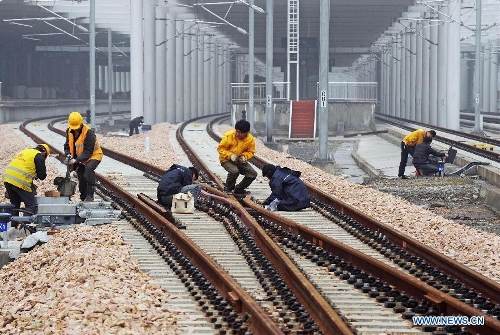
Construction workers and engineers examine rail tracks in the Huzhou Railway Station in Huzhou, east China's Zhejiang Province, Feb. 26, 2013. The 150-kilometer Hangzhou-Ningbo high-speed railway linking Hangzhou and Ningbo, two hub cities in Zhejiang, commenced its integration test here on Friday. Once put into operation on July 2013 as expected, the high-speed railway that designed at a top speed of 350km/h, would reduce the travel time to 36 minitues, a quarter time of the current two-hour journey. (Xinhua/Tan Jin)
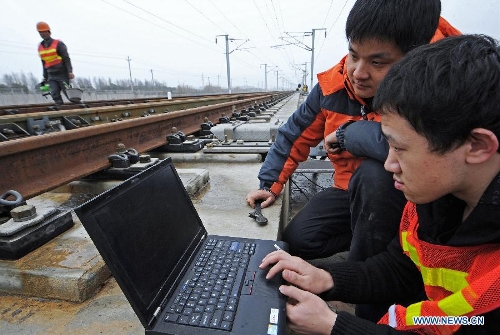
Engineers from China Academy of Railway Sciences collect data for the integration test in Huzhou, east China's Zhejiang Province, Feb. 26, 2013. The 150-kilometer Hangzhou-Ningbo high-speed railway linking Hangzhou and Ningbo, two hub cities in Zhejiang, commenced its integration test here on Friday. Once put into operation on July 2013 as expected, the high-speed railway that designed at a top speed of 350km/h, would reduce the travel time to 36 minitues, a quarter time of the current two-hour journey. (Xinhua/Tan Jin)
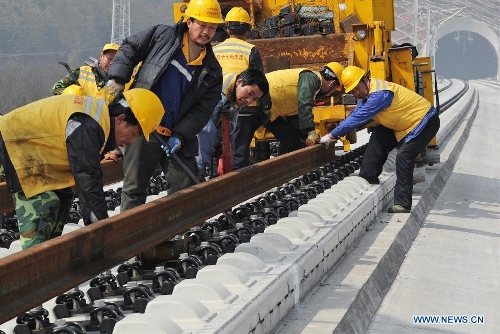
Construction workers and engineers examine rail tracks in the Huzhou Railway Station in Huzhou, east China's Zhejiang Province, March. 16, 2012. The 150-kilometer Hangzhou-Ningbo high-speed railway linking Hangzhou and Ningbo, two hub cities in Zhejiang, commenced its integration test here on Friday. Once put into operation on July 2013 as expected, the high-speed railway that designed at a top speed of 350km/h, would reduce the travel time to 36 minitues, a quarter time of the current two-hour journey. (Xinhua/Tan Jin)
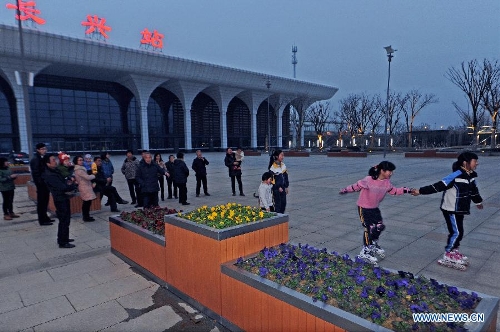
Local residents relax themselve at the aquare along the Changxing Railway Station in Huzhou, east China's Zhejiang Province, Feb. 27, 2013. The 150-kilometer Hangzhou-Ningbo high-speed railway linking Hangzhou and Ningbo, two hub cities in Zhejiang, commenced its integration test here on Friday. Once put into operation on July 2013 as expected, the high-speed railway that designed at a top speed of 350km/h, would reduce the travel time to 36 minitues, a quarter time of the current two-hour journey. (Xinhua/Tan Jin)
Posted in: Others